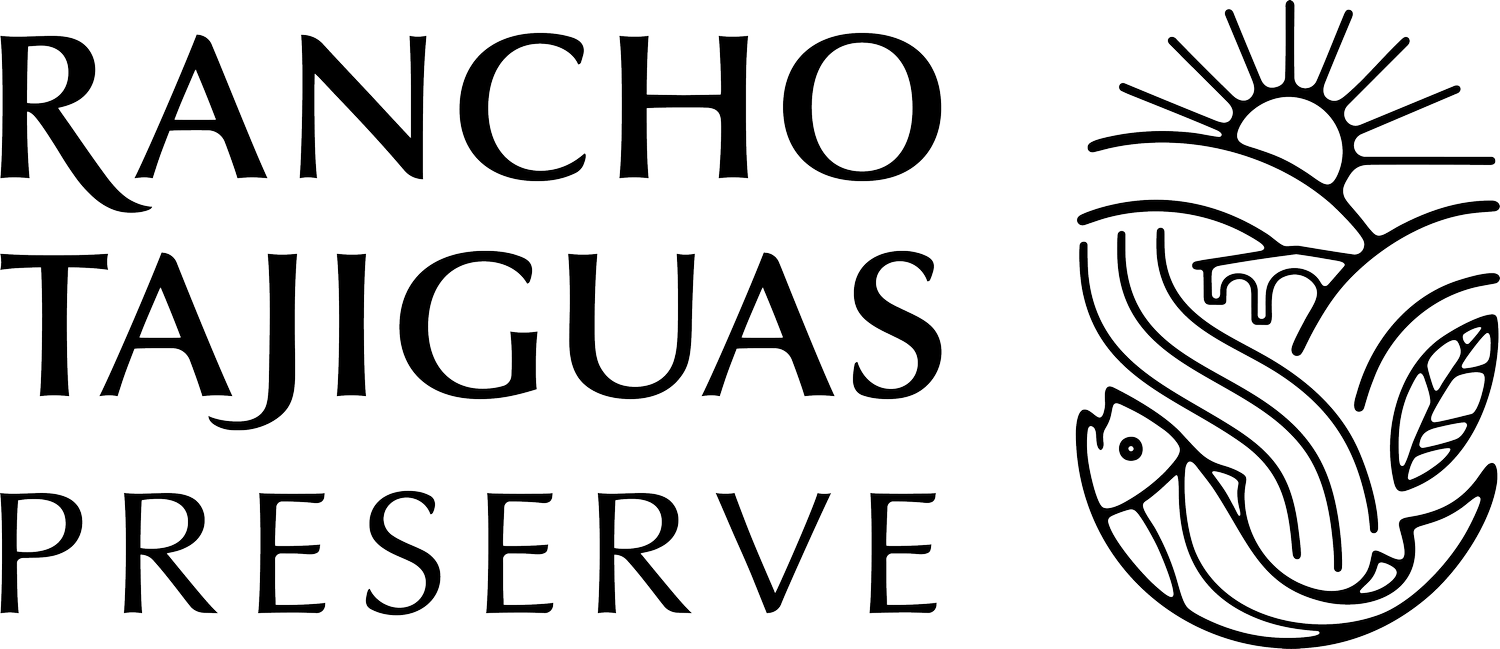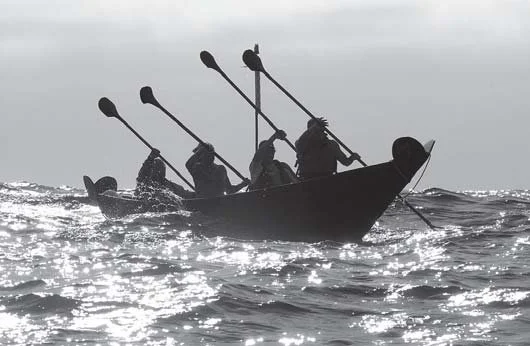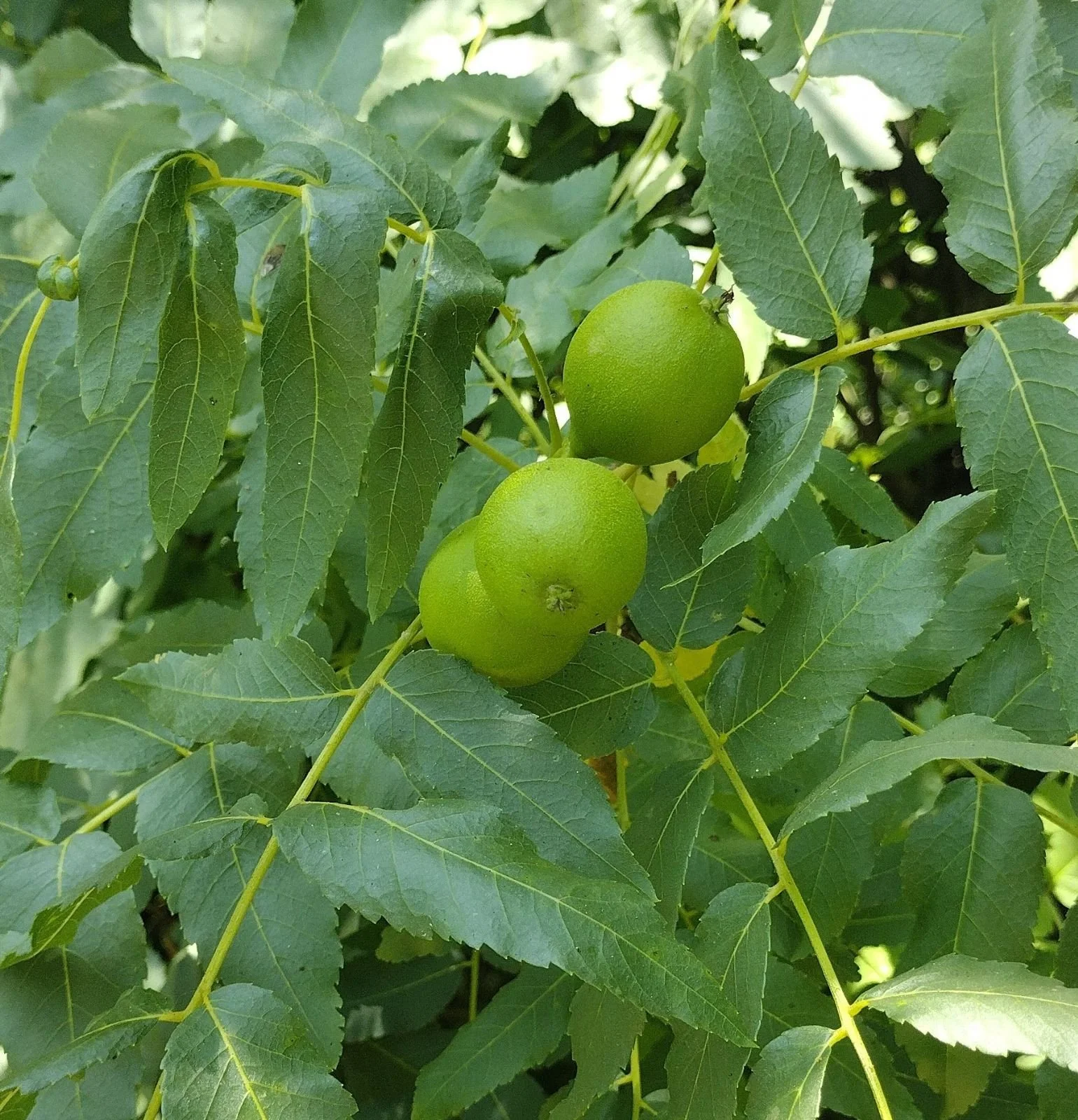Chumash History
Ancestral Lands
Rancho Tajiguas Preserve, and the entire Gaviota Coast, is part of the ancestral and unceded lands of the Chumash people. The Chumash lived on the Gaviota Coast for at least 10,000 years, and likely for much longer. As described in the Chumash National Marine Sanctuary Nomination:
“The unique environment, a south-facing coast with a channel sheltered by the offshore islands, allowed coastal Chumash to develop fishing and trading with Chumash residing on the offshore islands. They fished with a complex array of fishing gear, including harpoons, shell carved hooks, nets, lines, sinkers and fish traps. The tomol, the only sewn sea going plank canoe caulked with tar in North America, is central to Chumash heritage even today. Accomplished mariners, Chumash used their solar, lunar and stellar knowledge to create complex solstice and stellar alignments only now being rediscovered.”
Chumash Tomol ‘Elye’wun paddlers crossing at Santa Cruz Island. California Channel Islands NMS, 2006. Image: Robert Schwemmer, CINMS, NOS, NOAA.
The Chumash at Rancho Tajiguas Preserve
Large Chumash settlements existed near the mouths of many Gaviota Coast canyons, including Tajiguas Canyon which in 1770 supported a population of approximately 400 living on either side of the mouth of Tajiguas Creek. Described by Father Crespi, there were 42 houses on one side of Tajiguas Creek, and 37 on the other, and 15 canoes (tomols) used for travel along the coast and to the Channel Islands. Six years later the De Anza expedition noted the settlement at Tajiguas Creek had been abandoned.
The arrival of the Spanish inflicted untold turmoil on the Chumash - stealing their land, subjugating them to the brutal mission system, destroying their natural way of life, and spreading infectious diseases. During the Spanish era, the Chumash were forced to provide much of the labor for cultivating crops and running cattle, working for others on ranches within their own lands.
Depiction of Coastal Chumash from a mural in Lompoc gives a sense of the village where the Portola Expedition camps for the night in 1769 (Section of Lompoc mural); The Early Years of Rancho Tajiguas Preserve By Hattie Beresford (Montecito Journal, 2019).
Traditional Foods
Tajiguas Canyon was used by the Chumash to gather holly-leaved cherry (Prunus ilicifolia), and may have derived its name from the Barbareno Chumash word for the plant, `akhtayukhash.
Southern California black walnut (Juglans californica) is another California native plant gathered by the Chumash that still exists, although in vastly diminished numbers, in Tajiguas Canyon today.
Prunus ilicifolia, Image: Noah Elhardt
Juglans californicia, Image: John Grimshaw
Additional Resources
Learn more about Chumash History in the links below:
Chumash Heritage National Marine Sanctuary: https://sanctuaries.noaa.gov/chumash-heritage/
Chumash Heritage National Marine Sanctuary Nomination (June 2015)
The Early Years of Rancho Tajiguas Preserve By Hattie Beresford (Montecito Journal, 2019)
Cultural Landscape and Historic Rural Landscape Study and Phase 1-2 Historic Resources Management Report for El Rancho de Tajiguas (Post/Hazeltine Associates, November 2020)
Barbareño Band of Chumash Indians: https://www.bbc-indians.com
The Barbareño/Ventureño Band of Mission Indians: https://www.bvbmi.com
Northern Chumash Tribal Council: https://northernchumash.org




